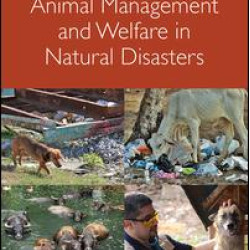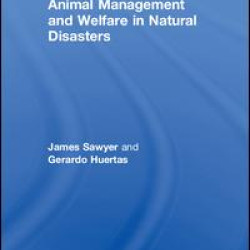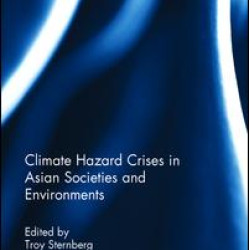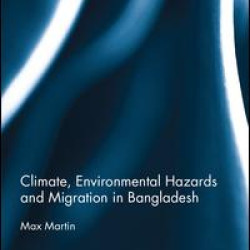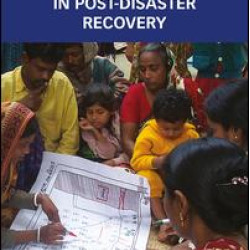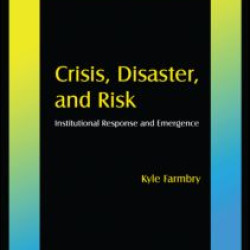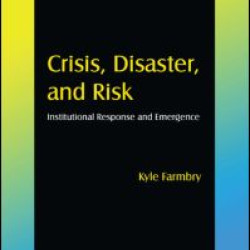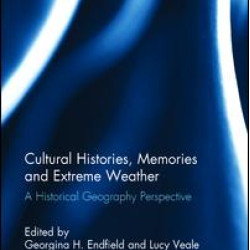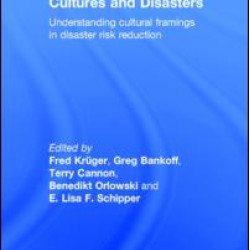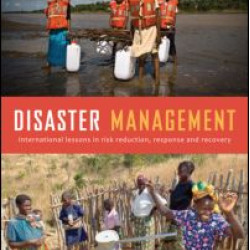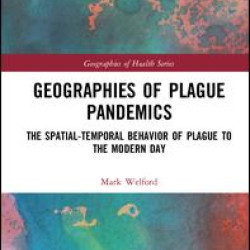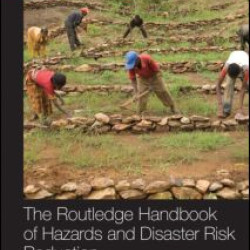Hazards & Disasters
Brand: Taylor & Francis
Model: Stock
The devastating effects of natural disasters are not only directly on humans and infrastructure, but also on animals, which may be crucial to the livelihoods of many people. This book considers the needs of animals in the aftermath of disasters and explains the importance of looking to their welfare..
₹2,202.46 ₹2,753.08
Brand: Taylor & Francis
Model: Stock
The devastating effects of natural disasters are not only directly on humans and infrastructure, but also on animals, which may be crucial to the livelihoods of many people. This book considers the needs of animals in the aftermath of disasters and explains the importance of looking to their welfare..
₹8,445.60 ₹10,557.00
Brand: Taylor & Francis
Model: Stock
This book examines climate hazards crises in contemporary Asia, identifying how hazards from the Middle East through South and Central Asia and China have the power to reshape our globalised world. By integrating human exposure to climate factors and disaster episodes, the book explores the environm..
₹9,180.00 ₹11,475.00
Brand: Taylor & Francis
Model: Stock
This book traces the linkages between climate and environment-related hazards and migration, and attempts to dispel some popular myths. While the book takes Bangladesh as a case study, it will address the international debate over the linkages between climate, environment and migration, and highligh..
₹8,078.40 ₹10,098.00
Brand: Taylor & Francis
Model: Stock
The book explores the ways of working with communities in transition or trauma and particularly in their recovery phases in the array of case studies of practical experience, so that the book as a whole can offer practical suggestions on how to give more substance to the rhetoric of community consul..
₹2,569.66 ₹3,212.08
Brand: Taylor & Francis
Model: Stock
Crisis, Disaster and Risk: Institutional Response and Emergence..
₹2,569.66 ₹3,212.08
Brand: Taylor & Francis
Model: Stock
Crisis, Disaster and Risk: Institutional Response and Emergence..
₹8,812.80 ₹11,016.00
Brand: Taylor & Francis
Model: Stock
Extreme weather events, such as droughts, strong winds and storms, flash floods and extreme heat and cold, are among the most destructive yet fascinating aspects of climate variability. Historical records and memories charting the impacts and responses to such events are a crucial component of any r..
₹8,078.40 ₹10,098.00
Brand: Taylor & Francis
Model: Stock
Why did the people of the Zambesi Delta affected by severe flooding return early to their homes or even choose to not evacuate? How is the forced resettlement of small-scale farmers living along the foothills of an active volcano on the Philippines impacting on their day-to-day livelihood routines? ..
₹8,078.40 ₹10,098.00
Brand: Taylor & Francis
Model: Stock
There is a perennial gap between theory and practice, between academia and active professionals in the field. In disaster management this gap means that valuable lessons are not learned and people die or suffer as a result. This book opens a dialogue between theory and practice...
₹2,863.42 ₹3,579.28
Brand: Taylor & Francis
Model: Stock
Geographies of Plague Pandemics attempts to synthesis our current understanding of the spatial and temporal dynamics of plague, Yersinia pestis. The environmental, political, economic, and social impacts of the plague from Ancient Greece to the modern day are examined. Chapters explore the identity ..
₹8,078.40 ₹10,098.00
Brand: Taylor & Francis
Model: 9780415523257
The Handbook provides a comprehensive statement and reference point for hazard and disaster research, policy making, and practice in an international and multi-disciplinary context. Specifically, it aims to provide critical reviews and appraisals of the current state of the art and future developmen..
₹4,038.46 ₹5,048.08


